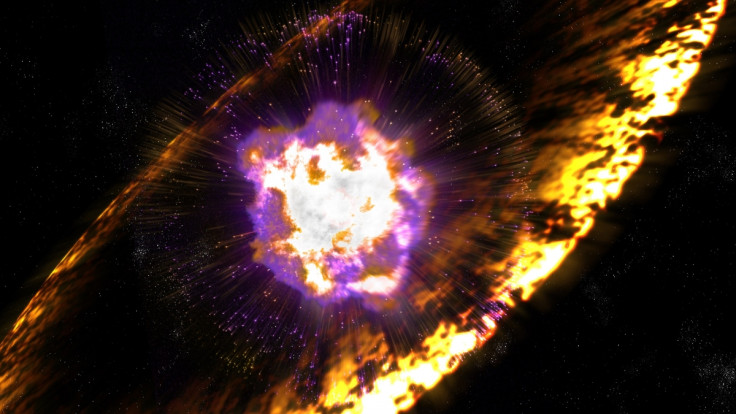Attack of the stars: Radioactive debris from ancient supernova battered Earth millions of years ago

A series of massive supernova explosions near to our Solar System saw radioactive debris rain down on Earth for millions of years, researchers have discovered. Two studies published in Nature show how the planet was battered with energy from exploding stars from 1.7 to 3.2 million years ago, and 6.5 to 8.7 million years ago. The find potentially has widespread implications for life on Earth – including the evolution of humans.
Scientists found radioactive iron-60 in 120 samples of sediment and crust taken from the Atlantic, Indian and Pacific Oceans. Iron-60 is produced when a supernova explodes, so its presence suggests it struck Earth at some point in the past. The samples spanned the past 11 million years of Earth's history.
In one study, researchers were able to date the samples to between 3.2 and 1.7 million years ago. They also found evidence of iron-60 from an earlier supernova, around eight million years ago – a time that coincided with faunal changes across the planet.
Anton Wallner, who led the research on dating the iron-60, said: "We were very surprised that there was debris clearly spread across 1.5 million years. It suggests there were a series of supernovae, one after another."
In the second study, Dieter Breitschwerdt and colleagues were able to trace the source of the supernova to about 300 light years from Earth. This would have been visible in the day – about the same brightness as the moon.
Researchers said that one possible source of the supernova is an aging star cluster that has now moved away from Earth. Because the star cluster no longer has any stars left, they had likely already exploded as supernova, producing these waves of debris that battered Earth.
The supernova would have been outside Earth's 'kill zone' by about 30 light years. So while Earth was not close enough for the supernova to cause catastrophic damage, it would have impacted the planet in some way.
It has been suggested the radioactive debris could have increased cloud cover, for example. Wallner said: "It's an interesting coincidence that they [supernova dates] correspond with when the Earth cooled and moved from the Pliocene into the Pleistocene period."
In a related News & Views article, astrophysicist Adrian Melott said: "It is now possible to ask key questions with some precision; for example, could these supernovae have had substantial effects on Earth's climate and organisms — and perhaps even a role in human evolution?"
He added: "This research essentially proves that certain events happened in the not-too-distant past. They make it clear approximately when they happened and how far away they were. Knowing that, we can consider what the effect may have been with definite numbers. Then we can look for events in the history of the Earth that might be connected to them."
© Copyright IBTimes 2025. All rights reserved.






















